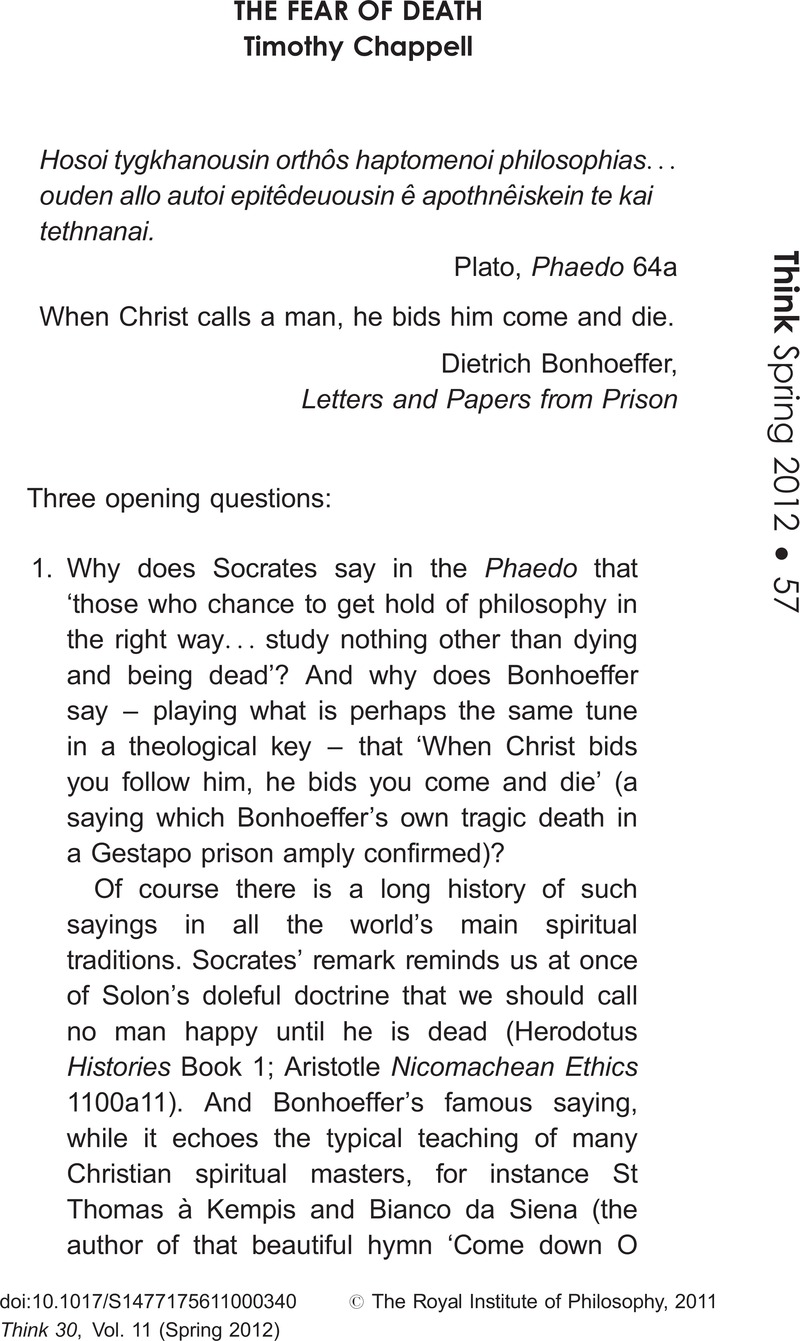No CrossRef data available.
Article contents
Abstract

- Type
- Research Article
- Information
- Copyright
- Copyright © The Royal Institute of Philosophy 2011
References
Notes
1 A passage also cited, as some readers will remember, by Joe Simpson in Touching the Void.
2 Another instance of craven panic in the face of death, it always seems to me, is Angelo Cavaradossi's nonetheless marvellous aria E lucevan le stelle at the beginning of the last act of Tosca (1900): ‘E muio disperato, e muio disperato, e non ho amato mai tanto la vita’. Truly operatic sentiment had come a long way, in 123 years, from the equally bizarre and rather wooden casualness with which Don Ottavio greets the murder of the Commendatore in Act 1 of Don Giovanni (1787). He simply tells Donna Anna, the Commendatore's daughter, to leave this bitter memory behind (‘Lascia, o cara, la rimembrenza amara’), as if it were something that had happened a year before rather than five minutes ago.
3 Call me unscholarly, but I do think Wiki is not a bad starting point for the literature: http://en.wikipedia.org/wiki/Near-death_experience. One thing that comes out there is the striking uniformity and commonness of near-death experiences: e.g. one survey is reported that showed that 18% of cardiac-arrest patients had a near-death experience, with 12% having ‘core experiences’ (i.e. near-death experiences that displayed all or most of the most typical features of such experiences, which include things that I experienced too: calm, a tunnel, a light beyond the tunnel, a sense of meeting someone, a sense of being sent back, and a reluctance to go back).
4 Thanks to Jim Furness for this reference.
5 Thanks to Professor Mark Nelson for this reference.
6 One way to start to learn how to think about ascetism is to read A Time To Keep Silence (London: John Murray, [1957])Google Scholar, Patrick Leigh Fermor's marvellous memoir of his visits to Benedictine and Cistercian monasteries in France in the 1950s.
7 From Henry Scott Holland's sermon at the funeral of Edward VII in 1910, in which he was presenting the nothing-at-all view of death, not as Christian orthodoxy, but as an inadequate view of death that Christians need to get beyond. See Wright, Tom, Surprised by Hope (London: SPCK 2007), pp.20–21Google Scholar.
8 Lewis, C.S., The Last Battle (London: Bodley, 1956), p.171:Google Scholar ‘Lucy said, “We're so afraid of being sent away, Aslan. And you have sent us back into our own world so often.” – “No fear of that,” said Aslan. “Have you not guessed?” Their hearts leaped and a wild hope rose within them. “There was a real railway accident,” said Aslan softly. “Your father and mother and all of you are – as you used to call it in the Shadowlands – dead. The term is over: the holidays have begun. The dream is ended: this is the morning.”’


